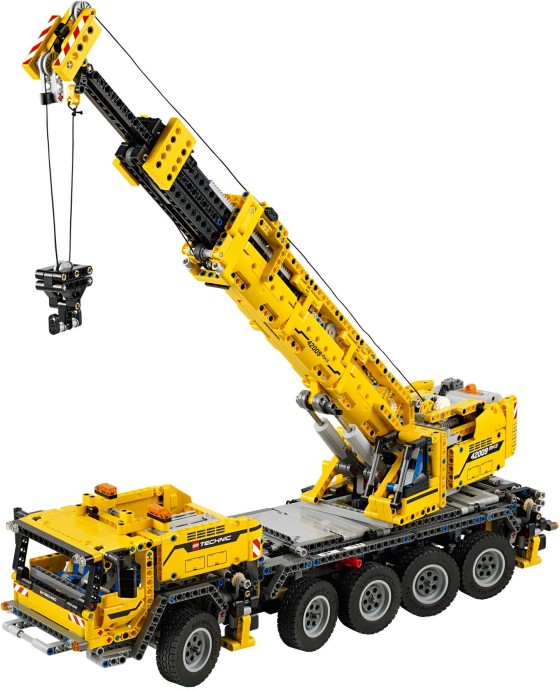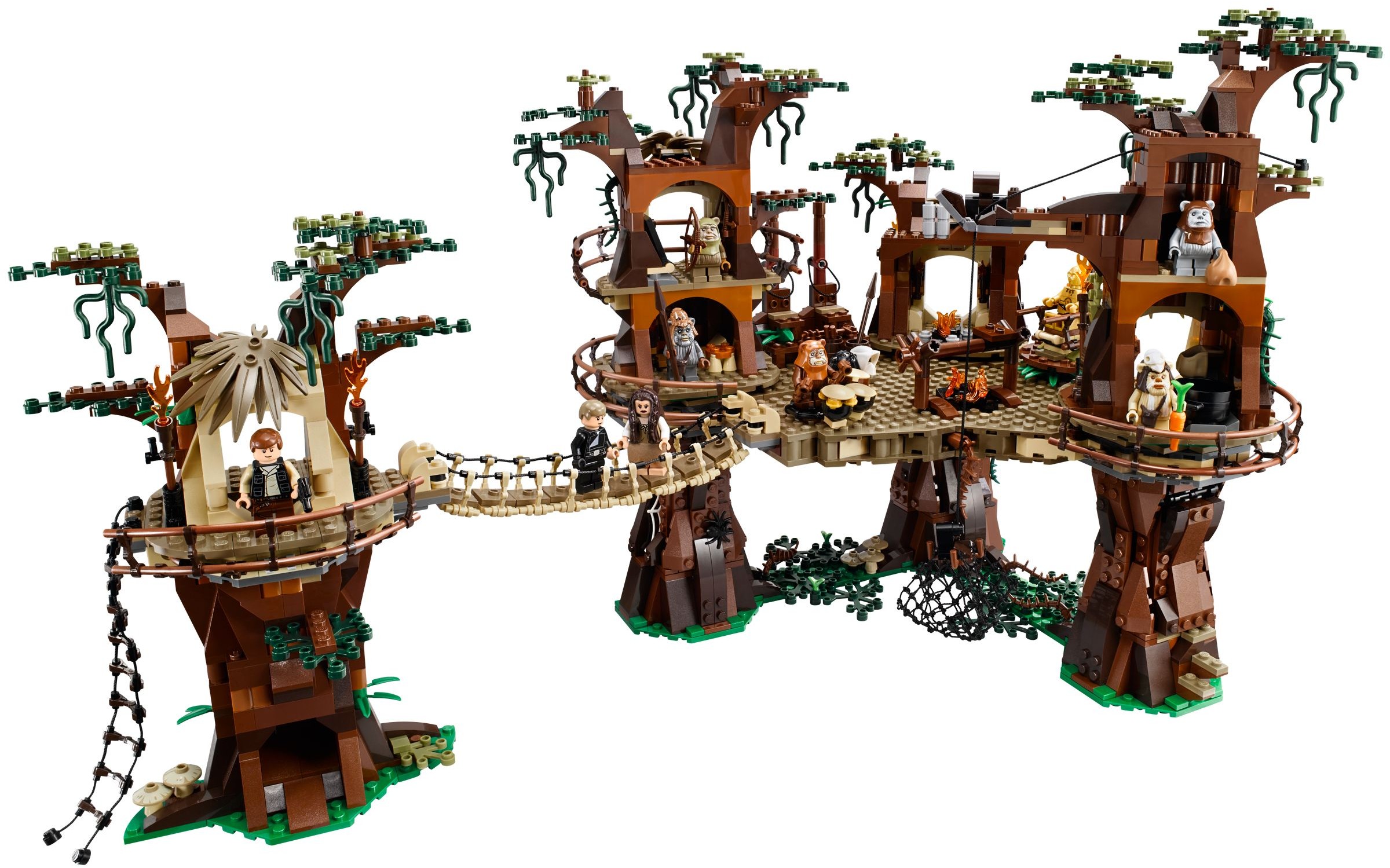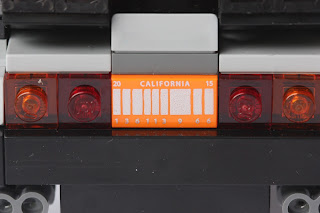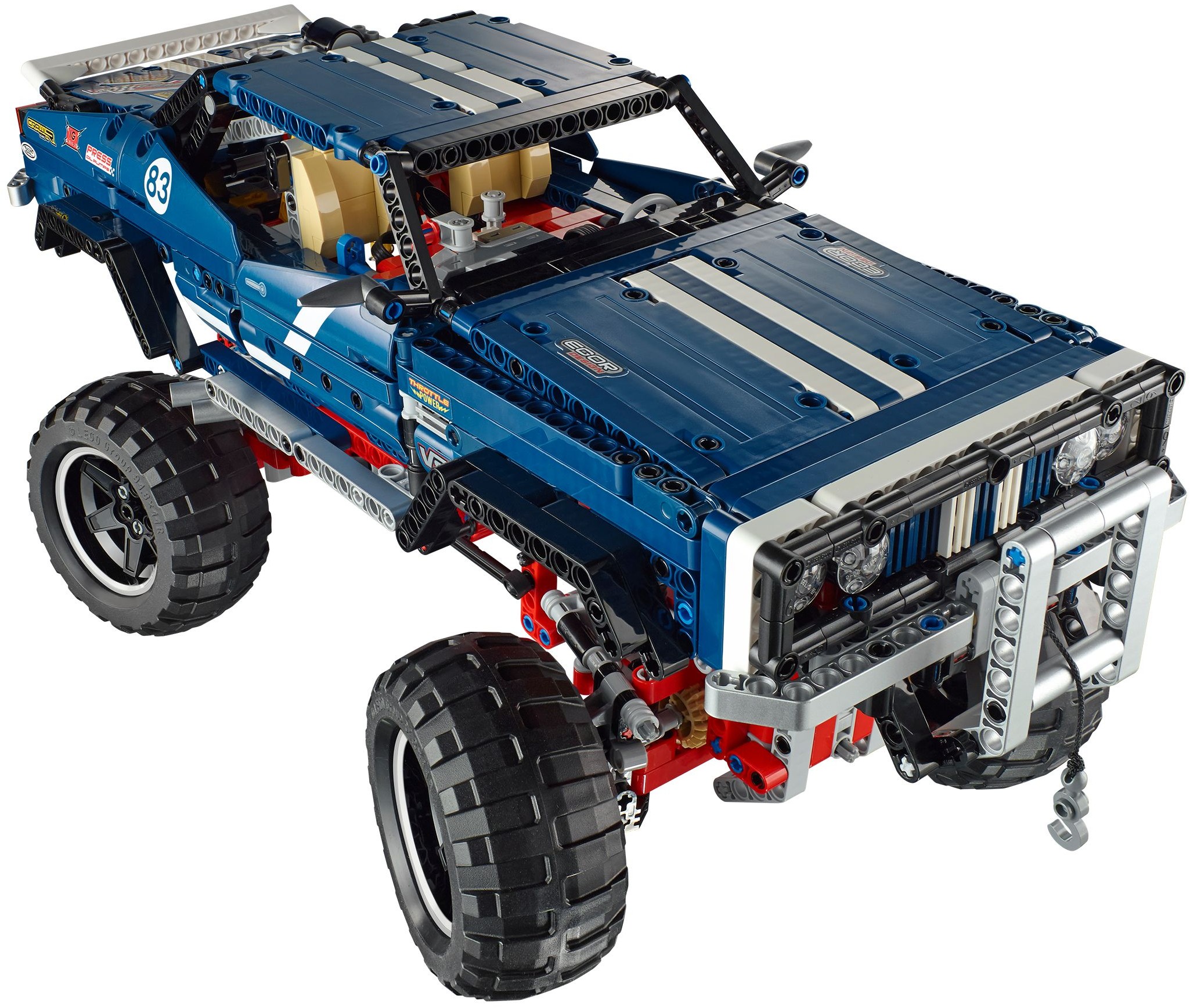Ever tried making bread?
It’s simple stuff. Flour, water, yeast and salt. And that’s it. You chuck it in a bowl, mix it round, stretch it a bit, leave it for a while, put it in a tin and put it in the oven.
Result : Yummy bread.
Or, more likely, something that looks like bread, but doubles as a hammer, because it’s rock hard.
Now I like bread, and I like - despite the fact that my bread is exclusively of the rock hard variety - making it. So a while back, Mrs Boo bought me a voucher for a day at a baking school. (1)
It’s incredible what flour, water, yeast and salt can become in the hands of someone who knows what they’re doing. And now I’m, if not an expert, able to produce bread that you might actually want to eat.
Don’t worry - we’ll get to the DeLorean soon…
Rewinding *cough* years, and the teen-aged Boo surveys his Lego collection. It consists of one basic set (I’ve had a hunt through various archives, and nothing springs out at me, but this…
I had a set something like this. A box. Full of bricks.
...is the sort of thing that I had) which was, in a nutshell, a box of bricks. I also had an old biscuit tin which contained a few more bricks, and lastly, I had the electric motor set.
All of which can be summarised as bricks, some more bricks, a few more bricks, and some bricks. Plus two green baseplates which would have been about 8 studs by 20 studs, or something of that order.
And the motor.
As previously mentioned, many most everything I built consisted of flat walls and right angles, made almost entirely of these…
A 2x4 Lego Brick
...and these.
A 2x2 Lego Brick
I had a few of these sorts of things…
A 2x16 Lego plate
...but they were just used as connectors to hold wobbly slabs of bricks together. I never actually considered building anything with them.
Probably because I didn’t have enough.
Fast forward (or Back to the Future, if you will (see what I did there?) ) to the present, and I have in my hands the Cuusoo set 21103. Or in layman’s terms, the time travelling DeLorean from the Back To The Future series.
After coming out of my ‘dark ages’, I’ve been concentrating on Technic to the exclusion of all else (2), and so this will be my first ‘normal’, or System Lego set.
Actually, thinking about it, because I only had the basic sets of bricks when I was younger, this is the first normal Lego set I’ve ever built.
Gosh!
I wasn’t even going to buy it. I’d looked at the original Cuusoo submission, I’d seen what Lego had come up with, and I thought ‘Hmmm.’
But when I got to the Watford Store a couple of weeks ago to pick up my Crawler and a couple of the new Technic sets, they had a pile of 21103 boxes on display. I picked one up, had a look, and, well, the rest is history.
So. Here’s the box, and upon opening it, what’s the first thing we notice?
Well the first thing we notice is that you can actually open it. Like a normal box. Without completely destroying it.
I’m baffled as to why every other set I’ve opened thus far (3) involves those perforated tabs that you have to run your thumbnail round, and once you get your fingers inside, you have to rip the end of the box open because it’s got about a gallon of glue on it.
After mangling the first couple of boxes, I now cut through the glue blobs with a knife (4) and open them without any of the associated cardboard-based carnage that had gone before.
But it’s very annoying.
Anyway. For whatever reason, this box just opens. And inside we find a nice solid, bound manual, five bags of parts and three 2x16 flat plates.
A very nice manual.
Never mind the quality, feel the thickness!
A box full of goodies.
The manual is a cut above the usual instruction booklets. At the front it has a couple of pages dedicated to the film, and some ‘facts’ about the the actual time machine. It then has two pages about the Michael J. Fox Foundation for Parkinson’s Research. And if you want to know more about what the Foundation does, have a look at their website.
At the back of the manual there’s a message from Masashi Togami, the founder of Team BTTF, who were responsible for the original Cuusoo submission, a message from Steen Sig Andersen, the Lego model designer who came up with the final design, and a page about the Cuusoo project itself.
The rest of the booklet is (unsurprisingly) dedicated to the build - 82 pages to create the Mk1 model, and a further 10 pages to tranform it into the MkII and MkIII versions.
So here we go…
Remember how I said that just about everything I’d built in my youth was with the big, chunky Lego bricks?
Hardly any here, other than a handful of the 2x1 stud bricks. The majority of the build utilises the thin ‘plate’ type pieces. Much like the bread, I had these simple parts, but never did anything clever with them. But now I was about to see what a Master Baker could do.
If a Master Baker used flat Lego pieces, rather than flour and what have you...
I think part of the reason I never tried building with these ‘flats’ was that it seems like you keep adding pieces, but never really get anywhere. A bit like those people who build cathedrals out of matchsticks. You put in a lot of work, stand back to see how you’re doing, and find you’ve built 2” of wall.
And so it seemed with the DeLorean. Lots of fiddling with small pieces, 2x1 plates, 3x2 plates, three stud L shaped pieces and so on, and after about 20 mins I had this:
I don't think it'll drive, let alone travel through time.
Quite a lot of pieces, and seemingly, not much to show for it. Some points to note - the blue and red parts don’t seem to signify anything other than to make it easy to spot which is the front (red) and which is the back (blue). And at this stage, you can see how some Technic pieces are being used to allow the wheels to swivel under the body in the MkII and MkIII variations.
Another 15 minutes, and another 90 or so parts later, and it’s sort of starting to look a bit more like a car.
Kind of.
Getting there. Slowly.
It’s been an interesting build so far, but things are about to get both worse, and better.
The bonnet, which caused howls of anguish throughout the Lego community when the final model was unveiled is… well let’s just say it ain’t pretty. However, it can take some comfort in the fact that it’s not as bad as the ‘A’ pillars that form the edges of the windscreen.
They.
Are.
Grim.
But meanwhile, at the back, things are looking up. A bunch of small black pieces come together perfectly to form the… exhaust things… that stick up at the back. But the best bit (to my mind, although they’ve come in for some criticism elsewhere) are the gullwing doors.
Yes, they’re only attached at one point, which has the potential to make them a bit fragile (although I’ve not had any trouble with them), but by virtue of the fact that they’re also hinged where the window (or gap that creates the window) meets the door, it fits with the bodywork perfectly. Some people might moan about them, but I think they’re one of the highlights of the set.
Inside, the dashboard has been coming together nicely, and it’s worth noting that this set has no stickers - all the relevant tiles are printed. This includes the various dials and readouts on the dash, plus both versions of the numberplate (‘OUTATIME’ and the orange barcode version). It also includes the now infamous Flux Capacitor tile, with it’s ‘Sheild’ misprint. Time will tell whether these early ‘mistake’ versions will be worth the mint that some people think they will be. Trouble is, no-one knows exactly how many sets were in that first run. If it’s twenty or thirty thousand, and the mistake is rectified for any further runs, then maybe it’ll be worth a slight premium. If, as many believe, there were 100,000 or more produced, then you’re unlikely to be sitting on a goldmine.
While on the subject of the printed tiles, I have to confess to a bit of a grump where the time displays are concerned. First off, there are only two displays, rather than the three from the original car. I can live with this - it would have made the display too small to read. But the thing that does bug me, is that instead of setting the target time to 1955, as per the film, Lego have set it to the 28th of January 1958 which, as a note in the build manual tells us, was ‘the date when the first Lego brick was patented’.
So?
It’s about ‘Back To The Future’ here, Lego! Not you!
Some people have thought this was a nice touch. Personally, I think it’s Lego getting a bit unnecessarily ‘Me, me, me.’ I guess everybody will have their own view.
Anyway. Along the way there had been a fair bit of greebling (5) to do, and the build is finished off with some more of this, including the flexible tubing along the sides which represents… some sort of flexible tubing. (6)
The finished MkI DeLorean Time Machine, greebles 'n' all.
Stepping through the gullwing door. One at a time.
OUTATIME
Lastly (or firstly, if you’re following the manual to the letter), are the two minifigs included in the set. Marty McFly comes with a torso printed back and front representing his shirt and bodywarmer (remember them? I had a blue one. It was great. Wonder if you can still get them?), but other than that is a run of the mill minifig. He has the now quite common ‘two expressions’ reversible head, one smiling, one looking rather worried. Rounding Marty off is a purple skateboard, though sadly, it comes with a set of clip on wheels only, and does not have the option of replacing them with a clear block to represent the hoverboard of the second film.
Marty McFly and non-hovering skateboard
Doc Brown is a broadly all-white affair, white legs, a white printed torso (badges and whatnot on the front and a large and not-entirely-accurate-if -my-memory-serves-correctly radiation symbol on his back.
He’s topped off with some white, swept back hair which reminds me more of an albino ‘Uncle Fester’ from The Munsters, rather than Doc Brown, but you can’t have everything.
Doc Brown. Apparently.
It’s a fairly simple task to convert the set to MkII and MkIII configurations, so I set about that.
The MkII involves swapping out the grey wheels for red and folding them underneath the body, courtesy of those Technic hinges. The rear ‘OUTATIME’ numberplate is then changed for the orange barcode version, and four small parts make up the ‘Mr Fusion’ reactor that sits at the back. It’s completed by creating two transparent stands which allow the model to ‘float’ in a most satisfactory fashion.
The 'floating' MkII
New barcode numberplate
'Mr Fusion' portable nuclear reactor, perfect for when you need 1.2 Gigawatts
New red wheels, folded under in 'flight' mode
The final transformation to MkIII status is the cause of that not-entirely-pretty bonnet. The front 1x4 smooth plate is lifted off, and then two 2x3 orange plates have a large amount of greebling added, which then sits on the bonnet, clipped on at the point where the smooth plate has been removed.
The MkIII bonnet. Controversial.
Overall?
Well to call it a Curate’s egg would be a bit harsh. It’s good, with a few iffy parts, rather than the other way around. There’s no getting away from the fact that it’s a bit lumpy, but on the other hand, anyone who’s ever seen the film is likely to recognise it straight away, so from that point of view, it has to be classed a success.
Let’s face it. Lego is a blocky medium. In the same way that if you try to represent a digital image with just a handful of pixels, it’s going to come out as a whole lot of corners, but up the pixel count and suddenly everything becomes smoother, so it is with Lego. At this scale it was always going to be a bit compromised. Up the scale and who knows?
Well in fact we do know, because the same team that produced the original for this set has also created a larger UCS version, which is around 60% of the way to gathering enough support to be reviewed by the Cuusoo team. And by virtue of the fact that it’s so much bigger, it’s that much smoother.
But for now, we have this set, and I have to say it’s grown on me.
Yes, you can complain about the fact that the cabin isn’t big enough to fit both minifigs in at once, the ‘A’ pillars are awful and the the front bumper is the wrong colour.
And that bonnet will always divide opinion.
But it’s undeniably the BttF DeLorean! The doors are clever! The wheels fold up and it flies! All the ‘bits’ stuck on it look right!
It’s never going to be my favourite set, but it was an enjoyable build, if only to see what ‘regular’ Lego can do in comparison to my favoured Technic. And far from it being the ham-fisted, blocky, no-detail medium that I expected it to be, I’ve had my eyes opened.
Brilliant?
No.
But pretty good?
Oh yes...
~ ~ ~ ~ ~ ~ ~ ~ ~ ~ ~ ~
They concentrate on baking but do a variety of other cookery courses too.
Not cheap but highly recommended for the cook in your life.
(2) As mentioned elsewhere, I now own some non-Technic sets, such as the UCS R2-D2, and the VW Camper Van, but I haven’t built any of them yet.
(3) Admittedly, this is only four boxes.
(4) Carefully. Very carefully. I’m very attached to my fingers.
And they’re attached to me.
(5) I came across the term ‘Greebles’ some time ago, and it baffled me. The following definition is taken from the glossary at the website ‘The Brothers Brick’.
Greebles
Pseudo-technical detail added to a LEGO creation to enhance its appearance. Frequently seen in LEGO space and mecha creations.
(6) While I love the BttF films, I make no claims to knowing what all the technical gubbins on the car is supposed to be.


































